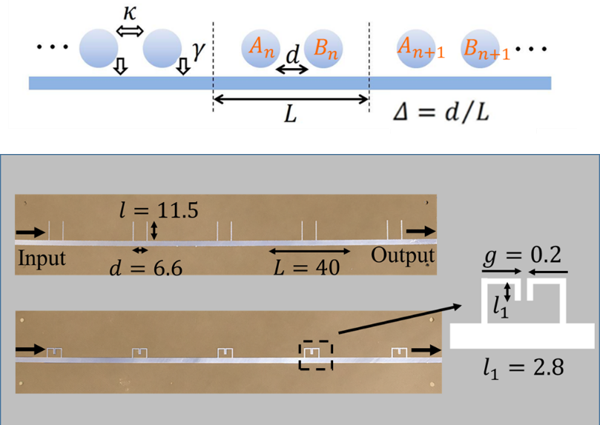Topological states of matter are one of the most important research fields in condensed physics and have been deeply studied over the last 10 years. Before the discovery of topological states, researchers believed that almost all states of matter could be characterized by symmetry or local order parameters, and the phase transition of matters was accompanied by symmetry breaking.
However, the rise of topological states has completely overturned this viewpoint. The phase transition of matters is not necessarily characterized by symmetry breaking. Besides the classification of states by symmetry, one can classify topological states according to the topological orders, which are related to the global properties of the target systems.
Recently, topological photonic crystals have been greatly developed. By utilizing the artificial microstructures with specific design, scientists can mimic the exotic topological states in the electron systems, such as topological insulators and quantum Hall effect, with photons propagating in photonic systems. Thus, some intriguing phenomena such as unidirectional wave propagation are observed in the topological photonic systems which may have great potential applications.
The topological photonic states are described by the topological orders, which can be extracted from the band structures of the photonic structures. In general, the band structures of the photonic systems stem from the two basic types of couplings among the periodic sites. One originates from the superposition of the evanescent field from different sites (near-field coupling), while the other is induced by the multiple scattering when the propagating waves pass through the materials (far-field coupling).
At present, most researches about the topological photonic states of photonic systems are based on the structures with single type of coupling (near-field coupling or far-field coupling). To the best of our knowledge, few work about the topological photonic states in the hybrid coupling systems (coexistence of near-field and far-field couplings in systems) is reported. The difficulty lies in that such hybrid coupling models are hardly realized in a controllable manner in real systems, and cannot be described by neither tight-binding nor multiple scattering theories.
Researchers from the School of Physics Science and Engineering of Tongji University and the Department of Physics of Shanghai Normal University, proposed the Bloch band theory based on temporal coupled-mode theory and transfer matrix method to investigate the energy bands of the one-dimensional (1D) hybrid coupling systems for the first time. The research results are published in Photonics Research, Volume 10, issue 1, 2022 (Caifu Fan, Xi Shi, Feng Wu, Yunhui Li, Haitao Jiang, Yong Sun, Hong Chen. Photonic topological transition in dimerized chains with the joint modulation of near-field and far-field couplings[J]. Photonics Research, 2022, 10(1): 01000041).
The related experiments are conducted based on the microstrip lines in which the near-field and far-field couplings among structure units can be independently modulated. The structural schematic is shown in Fig. 1 where in the 1D dimerized far-field coupling systems, the near-field coupling between two units in the same unit cells is introduced by bending the side branches towards each other.

Fig. 1 Schematic for the hybrid coupling model and experimental samples for one-dimensional photonic topological insulators.
The topological phase transition of the photonic hybrid coupling systems can be achieved by modulating the near-field coupling. With the near-field coupling being increased, flat bands and indirect band gaps appear successively in the band structures. The flat bands originate from the formation of perfect Fabry-Perot cavities in the structures while the indirect band gaps come from the competition between near-field coupling and far-field coupling.
In this work, the hybrid bands of the hybrid coupling systems are proposed and theoretically solved. Certain unique physical phenomena in the hybrid coupling system are observed. This hybrid coupling model provides extra platforms for the research on topological properties of photonics crystals. Due to the rich modulating parameters for the hybrid energy bands in this model, researchers may demonstrate the topological properties of the high-dimensional system in the 1D hybrid coupling system. This model can also be extended to other research field and higher dimensional systems.
However, this work does not consider the intercell near-field coupling in the 1D dimerized hybrid coupling system, and it is still a challenge for theoretical calculation of hybrid energy bands and experimental setups when both intracell and intercell near-field couplings in the far-field coupling models are considered. Meanwhile, the influence of non-Hermitian parameters (e.g., the gain or the loss) on the topological properties of this hybrid coupling model needs to be further studied.


